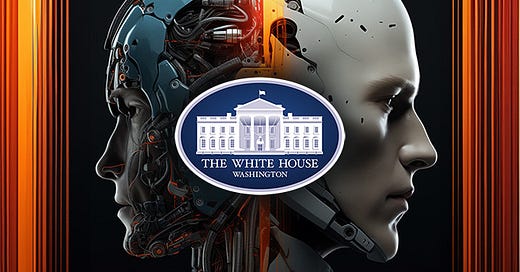When President Donald Trump signed the Advancing Artificial Intelligence Education for American Youth executive order on April 23, 2025, most headlines focused on the policy mechanics: a White House task force, discretionary grant opportunities, student competitions, and calls for public-private partnerships. But beneath the formal language lies something more consequential—if not immediate, then certainly directional.
This executive order doesn’t abolish our current school system, nor does it radically restructure it. But it does signal a meaningful pivot: one that opens the door to a broader rethinking of who drives education, where it happens, and how we define readiness in an AI-powered society.
A Shift in Orientation, Not Yet in Structure
At its core, the executive order affirms the federal government’s commitment to ensuring America remains globally competitive by cultivating AI literacy across K-12 education. It calls for the development of online learning materials, support for teacher training, and greater collaboration between schools, industry, and academia.
It’s not a dismantling of public education—it’s a modernization effort. Yet even incremental shifts in federal orientation matter. What this order does is legitimize a more distributed, flexible model of learning, one where schools become partners in a broader learning ecosystem rather than sole providers of content and instruction.
Schools Still Matter—but Not as Monopolies
American schooling was designed during the Industrial Age to deliver standardized knowledge to a large population. That model has been remarkably durable, but it’s increasingly strained under the weight of digital transformation.
AI tools—adaptive tutors, generative models, real-time feedback engines—are accessible to students outside the classroom, sometimes free of charge. In this emerging landscape, schools no longer have a monopoly on instruction. What they do have is the potential to become hubs of coordination, guidance, and equitable access.
This executive order gives school districts a new mandate: not to be everything for everyone, but to help young people navigate a rapidly evolving world of knowledge that no longer fits neatly into a textbook—or a school bell schedule.
Families as Co-Navigators
The order doesn’t hand control of education over to families, but it does reinforce their emerging role as co-navigators of learning. With AI education framed as a national priority and open educational resources being developed, families will need support—not just access—to make informed decisions about how their children engage with these tools.
For some, that will mean building learning extensions at home. For others, it may mean participating in project-based competitions or AI workshops offered by industry partners. The role of schools will be to ensure all families—not just the tech-savvy or well-resourced—can participate meaningfully.
What This Means for Schools Like Ours
In places like California, where tech-sector infrastructure is robust, this executive order presents a unique opportunity. Schools here can become bridges between students and the innovation economy—not by doing everything in-house, but by facilitating partnerships, apprenticeships, and early career pipelines in AI.
This is especially urgent for rural areas and under-resourced schools, where distance learning, properly designed, could level the playing field. The challenge will be ensuring this isn't just another digital divide moment, where some accelerate while others stall.
A Measured Optimism
Is this executive order the beginning of the end for school as we know it? Not exactly. But it may be the beginning of a slow metamorphosis—from school-centered delivery to learner-centered design, where education is scaffolded by schools, co-steered by families, and accelerated by AI.
It’s not revolution. It’s evolution, with a federal nudge.
The institutions we’ve relied on for over a century are not going away. But they are being invited—perhaps compelled—to change. If we rise to the occasion with equity, intentionality, and courage, this executive order could help us chart a more dynamic, inclusive, and future-ready vision of public education.
Not one that replaces schools.
But one that redefines their purpose.



